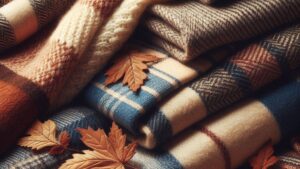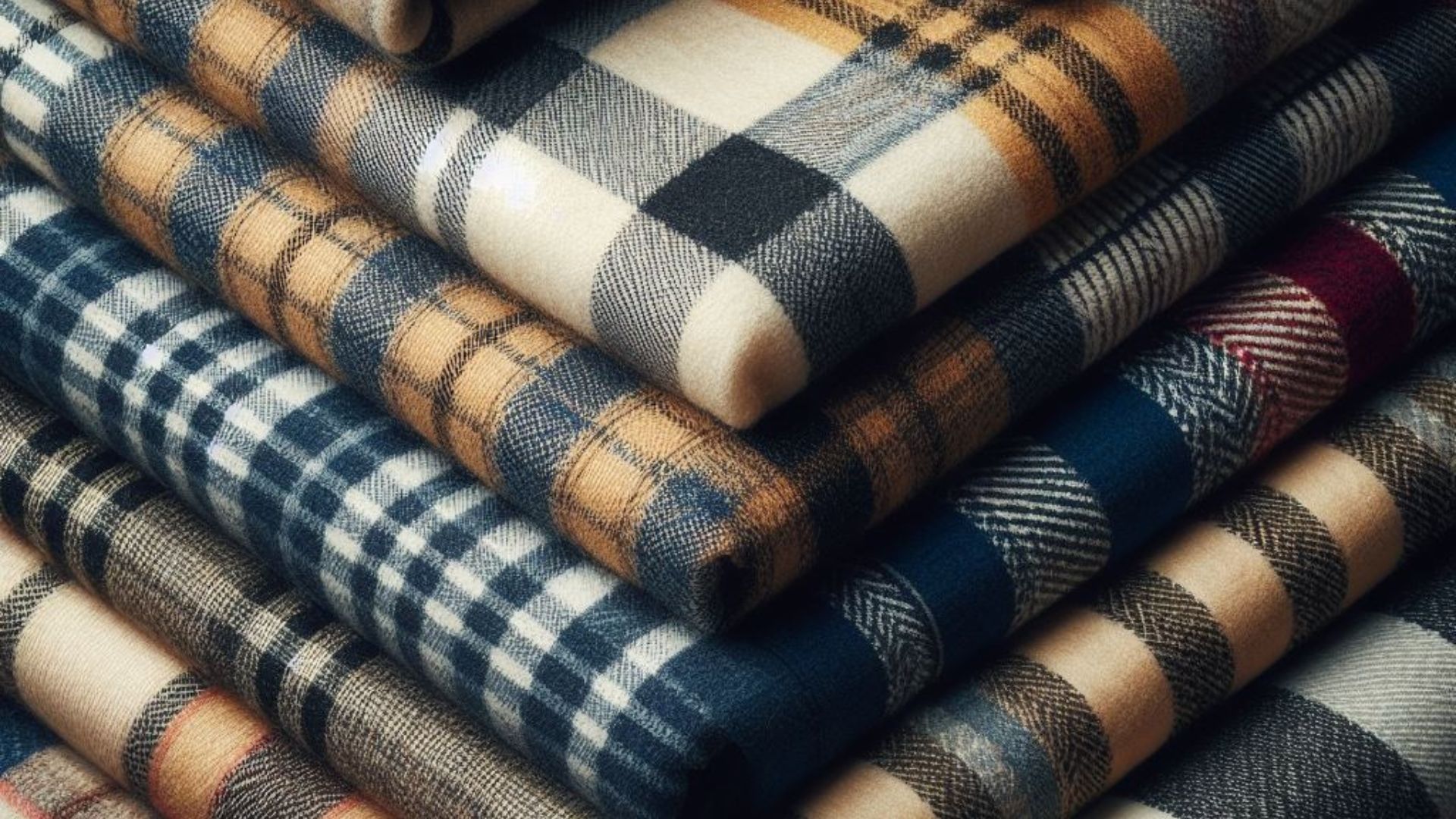What is Flannel Fabric?
Flannel is a soft woven fabric, typically made from wool, cotton, or a blend of fibers. Its distinguishing feature is its brushed surface, which lends it a fuzzy texture and enhances its insulating properties. Originally, flannel was primarily associated with cold weather clothing, but its versatility has made it a popular choice for various sewing projects, including quilting.
Can You Quilt with Flannel Fabric?
Yes, you can absolutely quilt with flannel fabric! In fact, many quilters adore working with flannel due to its warmth and coziness. However, there are a few factors to consider before diving into your flannel quilting project.

1. Pre-Washing:
Before you start cutting and piecing your flannel, it’s recommended to pre-wash the fabric. Flannel tends to shrink, and pre-washing helps mitigate this issue, preventing any surprises after your quilt is complete.
2. Seam Allowance:
Flannel can be slightly thicker than other quilting fabrics, so it’s essential to adjust your seam allowance accordingly. A slightly larger seam allowance can accommodate the thicker fabric and ensure that your pieces align neatly.
3. Needle and Thread:
When quilting with flannel, opt for a larger needle size to handle the fabric’s thickness without causing any strain on your sewing machine. Additionally, choose a sturdy thread that complements the weight of the flannel.
Tips for Quilting with Flannel
1. Mix with Other Fabrics:
Consider combining flannel with other quilting fabrics. Mixing flannel with cotton or other lightweight fabrics can add texture and visual interest to your quilt.
2. Ironing:
Flannel has a tendency to wrinkle, so ironing your fabric before cutting and after each seam can help maintain a smooth and even quilt top.
3. Quilting Design:
Keep in mind that the thickness of flannel may impact the quilting design. Opt for simpler quilting patterns to accommodate the fabric’s density.
So,…
Quilting with flannel fabric can result in wonderfully cozy and inviting quilts. By pre-washing, adjusting your techniques, and considering the fabric’s characteristics, you can create stunning quilts that exude warmth and comfort. Embrace the softness of flannel and explore the creative possibilities it offers in your quilting endeavors!
Remember, the choice of fabric is a personal one, and experimenting with different materials can lead to unique and beautiful quilts. So, go ahead, grab some flannel, and embark on your quilting journey.
Moving forward
For further guidance and inspiration on quilting projects, consider exploring resources like AllPeopleQuilt and The Spruce Crafts.
let’s delve deeper into the world of quilting with flannel fabric to address more common questions and offer additional insights.
Choosing Flannel for Your Quilt
Quality Matters:
When selecting flannel for your quilt, prioritize quality. Higher quality flannel tends to have tighter weaves, minimizing stretching and pilling over time, ensuring the longevity of your quilt.
Color and Patterns:
Flannel fabrics come in a wide array of colors and patterns. Consider the overall aesthetic you want for your quilt and choose flannel that complements your design.
Advantages of Quilting with Flannel
Coziness:
One of the primary reasons quilters adore flannel is its unparalleled coziness. Its softness and warmth make it perfect for quilts, especially those meant for colder climates or cozy nights indoors.
Great for Rag Quilts:
Flannel’s tendency to fray slightly at the edges makes it an excellent choice for rag quilts. The frayed edges add a charming, rustic touch to the finished quilt.
Addressing Challenges
Stretchiness:
Flannel can be slightly stretchy, making it important to handle it carefully while cutting and sewing. Pinning the fabric securely and handling it gently can minimize stretching issues.
Thickness:
Due to its thickness, quilting flannel might make your quilt heavier than anticipated. Keep this in mind, especially if you plan to use the quilt for bedding.
Flannel Quilting Projects to Explore
Baby Quilts:
Flannel’s softness makes it an ideal choice for baby quilts. The warmth and gentle feel are perfect for creating a cozy and comforting blanket for little ones.
Seasonal Quilts:
Use flannel to create seasonal-themed quilts. From warm, autumnal hues to festive winter patterns, flannel can add a seasonal touch to your quilting projects.
Final Thoughts
Quilting with flannel fabric opens up a world of possibilities. Its unique characteristics offer both challenges and rewards, allowing you to create quilts that are not only visually appealing but also incredibly cozy and inviting.
Remember, experimentation is key. Don’t be afraid to try new techniques or combine flannel with other fabrics to create quilts that reflect your creativity and personal style.
The world of quilting is vast and endlessly creative, and flannel fabric adds its own unique charm to this timeless craft. Enjoy the process, embrace the coziness of flannel, and let your imagination run wild as you embark on your next flannel quilting adventure!
For more inspiration and tips on quilting with various fabrics, explore additional resources at The Quilting Company, Craftsy, and National Quilters Circle.
Comparison tabular
Here’s a comparison table summarizing the key aspects of quilting with flannel fabric compared to other common quilting fabrics:
| Aspect | Flannel Fabric | Cotton Fabric | Batik Fabric |
|---|---|---|---|
| Texture | Soft, brushed surface with a fuzzy feel | Smooth, crisp texture | Unique hand-dyed appearance |
| Warmth | Excellent insulating properties | Lightweight, less insulating | Varies based on thickness and weave |
| Pre-Washing | Recommended due to potential shrinkage | Advisable to pre-wash to prevent shrinkage | Pre-washing helps remove excess dye |
| Handling | Can be slightly stretchy | Generally stable and easy to handle | Often has a tighter weave |
| Suitability | Great for cozy, winter-themed quilts | Versatile, suitable for various projects | Popular for vibrant, colorful designs |
| Usage | Ideal for baby quilts, rag quilts | Widely used for quilts, garments, crafts | Often chosen for its unique aesthetic |
This table provides a concise comparison of flannel fabric with cotton and batik fabrics, outlining their distinct characteristics and suitability for different quilting projects.
Wrapping up
As you wrap up your exploration of quilting with flannel fabric, remember that choosing the right fabric is just the beginning of your quilting journey. Embrace the cozy, comforting nature of flannel and let your creativity flourish as you design and create beautiful quilts.
Whether you’re drawn to the warmth of flannel for winter-themed quilts or you’re intrigued by its suitability for baby quilts or rag quilts, enjoy the process. Experiment with different patterns, colors, and combinations to craft unique and inviting pieces that reflect your personal style.
While quilting with flannel may present its own set of considerations, the rewards in terms of warmth, comfort, and charm are boundless. So, dive into your quilting projects with enthusiasm, and may your flannel quilts bring joy and coziness to those who wrap themselves in your creations.
Keep exploring, keep learning, and keep quilting! And if you ever need inspiration or guidance, the quilting community and resources are always there to support your creative endeavors.
Happy quilting and may your stitches be snug and your quilts be cherished.

For over a decade, I’ve been Mike, an artist, crafter, and designer deeply immersed in the Croc world. I thrive on crafting unique, size-inclusive patterns, fostering creativity, and sharing them on ktforum.com. My designs aim to ignite your creative spark and delight you, ensuring clarity and ease of use through rigorous testing. Join me in expressing your creative flair and showcasing your craft with joy.
Related Posts
- Essential Tools for Quilting: Your Comprehensive Guide
Quilting is a cherished art form that weaves together creativity and skill. Whether you're a…
- Mastering Fabric Yardage Calculation for Quilting: Your Comprehensive Guide
Quilting is a delightful craft, but getting the fabric yardage right can be a puzzle.…
- Preventing Fabric Bleeding in Your Quilt: A Comprehensive Guide
Quilting is a cherished craft, but the fear of fabric bleeding can dampen the joy…
- Choosing the Best Thread for Quilting: A Comprehensive Guide
Quilting, an artful blend of precision and creativity, is not just about the fabric; the…

